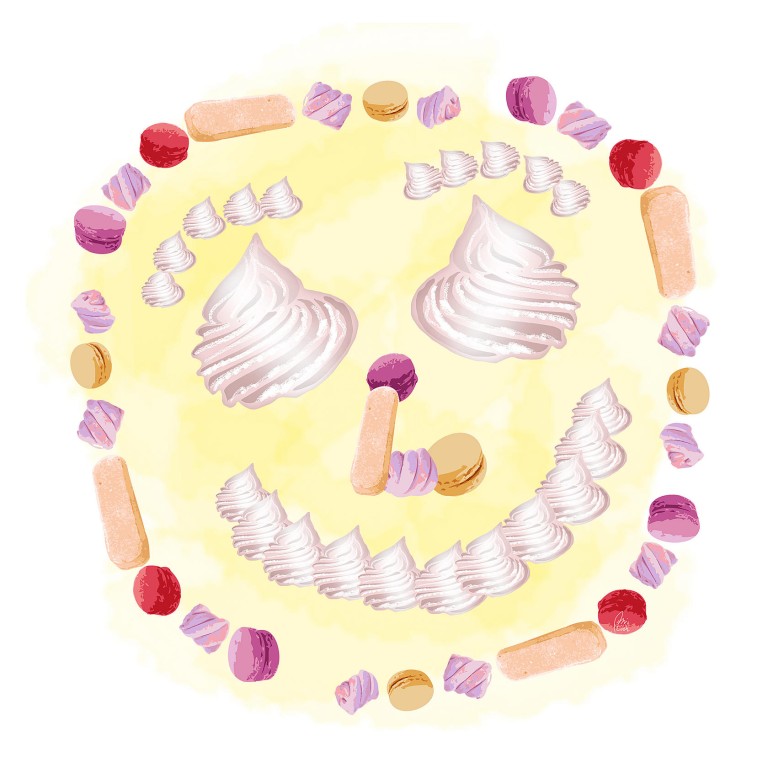
Truc
Susan Jung

Sounds simple enough. Except it's not. A meringue mixture can be used on its own, or combined with other ingredients to make things such as macarons and macaroons (they're not the same thing), marshmallows, buttercream, (where it's mixed with ground nuts) and biscuits (also known as ladyfinger biscuits).
There are a couple of basic rules that apply to all types of meringue. The egg whites whip up higher when they're at room temperature, and the utensils (the mixing bowl and beaters or whisk) should be very clean because even a tiny amount of grease will interfere with the stability of the egg-white foam, so it will separate, or deflate quickly.
Other than that, there are many techniques that can be used when making a meringue, depending on the results you desire. Many older cookbooks recommend using caster (also called superfine) sugar because it dissolves faster. It's true, but I've always used regular granulated sugar and I've never had a prob-lem with meringues being grainy, probably because I usually mix my meringues on medium speed in my heavy-duty electric mixer, rather than beating the ingredients on high speed for a shorter amount of time. The longer whipping process seems to dissolve the sugar.
There are three basic methods of making meringues. A regular meringue - known as "French" to pastry chefs - is made by whipping the egg whites until foamy, then gradually whipping in the sugar. When cooked, the meringue is light and airy, and also quite delicate. A firm, dense meringue can be made using the Swiss method - whisking the egg whites and sugar in a bowl set over a double boiler. The heat dissolves the sugar and when the mixture is warm to the touch, the egg whites and sugar are whipped until cool, high and glossy.
A stable meringue - one that won't separate or deflate very quickly - is made using the Italian method. You need to make a boiled sugar syrup and pour it, while hot, into the whipping egg whites. You then continue to whip the ingredients until they're cool.
Many cooks swear by using a copper bowl to whip the egg whites, saying it makes for a more stable foam. In his book, , food scientist Harold McGee writes that, "along with a few other metals, copper has the useful tendency to form extremely tight bonds with reactive sulfur groups: so tight that the sulfur is essentially prevented from reacting with anything else. So the presence of copper in foaming egg whites essentially eliminates the strongest kind of protein bond that can form, and it makes it harder for the proteins to embrace each other too tightly." A silver-plated bowl, according to McGee, can be used for the same reason. If you lack these, he suggests adding a pinch of powdered copper supplement to the egg whites, or an acidic ingredient such as cream of tartar or fresh lemon juice.
How much sugar is added to the egg whites, and how long and at what temperature the meringue is baked affects the texture of the finished product. There's no such thing as a low-sugar meringue - you need to have a sufficient amount of sugar (usually about 50 per cent by weight in proportion to the egg whites) or the foam won't be stable and will separate and deflate. A higher proportion of sugar makes the meringue crisper. If a meringue is baked at a high heat for a short time, it will be firm and brown outside, but soft within. If it's baked low and slow, it will be crisp throughout, and the colour will be pale.
Truc (tryk): noun, masculine, trick, gimmick, device. A French word for a chef's secret.

